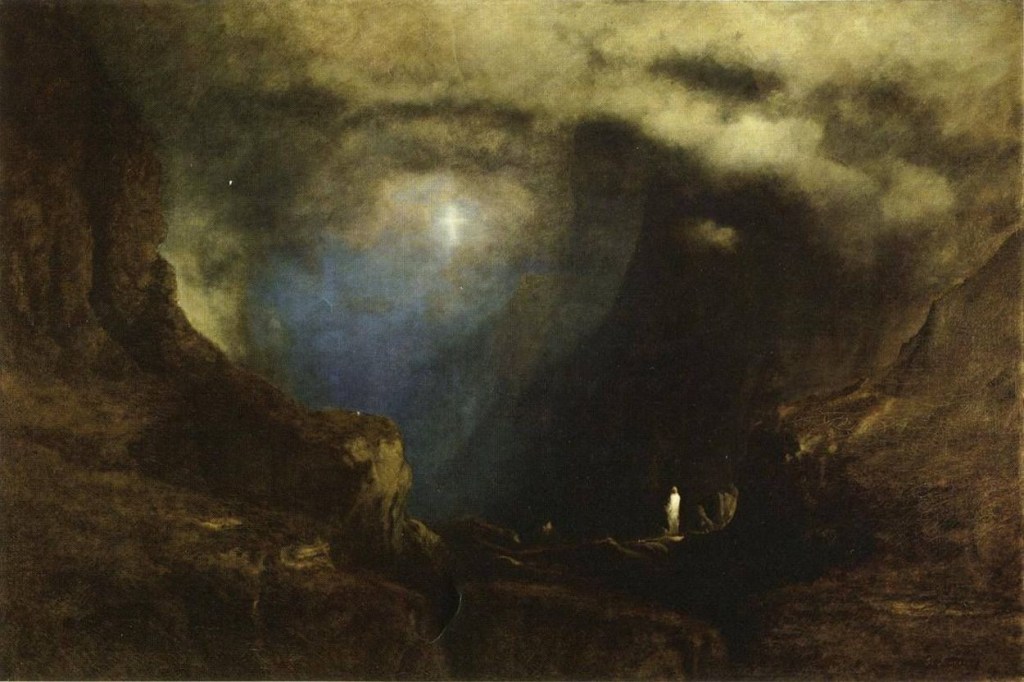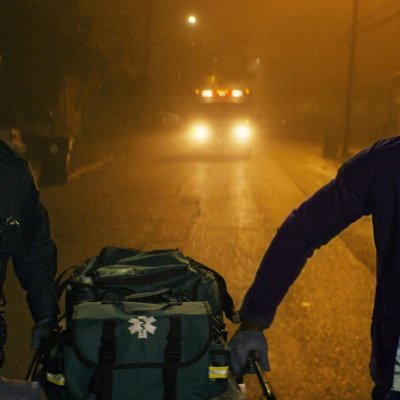Things Heard and Seen Ending Explained
We unpack, Swedenborg, George Innes, domestic abuse, and a very strange boat trip in the Netflix horror Things Heard and Seen.

Netflix horror film Things Heard and Seen is an unusual mix of crime thriller, supernatural horror, and philosophical musings based primarily around the theories of Emanuel Swedenborg and the paintings of George Innes, which were in turn inspired by Swedenborg.
What starts as a saga about an unhappily married couple who move into a haunted house grows into an existential horror with a bonkers ending. Fear not though, we are here to break it down for you.
George (James Norton) and Catherine (Amanda Seyfried) move with their young daughter Franny to a small town when George gets a job lecturing at the local college. Almost as soon as they move in, strange things begin to happen in the house and a pervasive smell of petrol fills their room at night.
It is revealed that a murder-suicide occurred with the house’s previous owners – Calvin Vayle killed his wife Ella Vayle and himself (using car fumes), orphaning their two sons Eddie and Cole.
As well as the house being haunted, it becomes apparent fairly quickly that George is not a good man. He begins cheating on his wife with Willis (Natalia Dyer) and shows casually threatening behavior to Catherine’s new friend Justine (Rhea Seehorn). We also learn that he fraudulently claimed that he painted pictures done by his late cousin and also forged a recommendation letter from his university to secure his current job.
Intolerance about his wife’s eating disorder, and an off-hand remark he makes about Justine eating a lot of lasagne (!) might also indicate that George has something to do with Catherine’s condition (though it’s a bit of a stretch).
Backed into a corner when his boss Floyd, (F. Murray Abraham) discovers his recommendation letter was fake, George decides to murder him by pushing him off his boat, which he also manages to make look like a heart attack. We understand that by this point George is being egged on by the male malevolent spirit in the house – that of the murderous Mr. Vayle.
On the way back from drowning his boss, George runs into Justine. He’s still soaking wet from presumably jumping overboard and swimming back to shore to disguise his part in Floyd’s murder. By now Justine has also clocked the scarf she made around the neck of George’s young mistress Willis and confronts him about this. George knows Justine witnessed his conversation with his former college professor pointing to the recommendation letter forgery. Knowing she’s another loose end, he runs her car off the road, leaving her in a coma.
Meanwhile Catherine has learned that the spirit of the dead woman who inhabits her house is benevolent. She also strongly suspects that it was George who killed Floyd and ran Justine off the road. While George is out she packs her bags and dresses her daughter presumably planning to leave when he’s asleep.
When he comes home, the two fight. George discovers Franny is dressed and the car is packed and he becomes aggressive with Catherine. He also pushes her to drink one of the protein drinks she has as a food supplement. But, eek!, he seems to have drugged it. Before Catherine can take Franny and run she passes out. Encouraged by the evil spirits in the house, George hacks Catherine to death with an axe.
When Cole comes over to babysit Franny he finds a note telling him Catherine is asleep and is not to be disturbed, and that he should give Franny her pre-prepared drink (also drugged? It’s unclear) and leave once she is asleep – all of which he does.
This is George’s alibi. Which is a bit ridiculous since he basically kills Catherine then goes to work, and the fact that he’s told Cole, in writing, specifically NOT to disturb Catherine while he is out looks pretty damn suspicious… But still, the police let George go and he immediately takes Franny to stay with his parents. Is he really going to get away with murder? Turns out no, but only (it seems) because Justine has finally woken from her coma and remembers everything.
But George isn’t about to go to prison. Instead probably inspired by the dead cousin he was obsessed with (and whose artwork he claimed credit for), he takes the boat The Lost Horizon and basically sails out into a storm and through the gates of hell, becoming the subject of his own George Inness-inspired painting. It’s a riff on the actual Inness painting “The Valley of the Shadow of Death,” with the cross in the sky inverted and the colors more infernal. As George sails into hell, the voices of Ella and Catherine whisper creepy epithets in the background.

That’s essentially what happens, but what does it all mean?
The title of the film comes from the name of Swedenborg’s book Heaven and its Wonders and Hell From Things Heard and Seen.
Essentially the philosophy of Swedenborg suggests that everything in the natural world has an equivalent in the spiritual world, and death is not the end but a new beginning. The philosophy, as explained by Floyd in the movie, also says that evil spirits are only attracted to evil people and good spirits to good people.
In the house Catherine has moved to, two women before her have been murdered by their husbands. The first was Mrs. Smit – she died in suspicious circumstances and her strict Calvinist husband marks her in his Bible as ‘Damned.’ The second, Ella Vayle, is the spirit that is drawn to Catherine and unites with her ghost after Catherine is killed. Ghost Ella expresses that ghost Mrs Smit was there for her in the same way as she is now there for Catherine.
Conversely, evil George attracts the spirit of evil ghost Calvin Vayle, who taunts and encourages George in his evil acts.
When George sails off into Hell, he is beginning a the next step on his (damned) spiritual journey. Indeed, the Inness painting the ending riffs on was inspired by Swedenborg, with Inness imagining a hopeful moment of transition between life and death for someone who’s achieved salvation. Meanwhile, as George goes down, the murdered women are united in some sort of liminal space.
Is it a triumph for them? Not really since they were all murdered by their abusive husbands, but if we are to believe in Swedenborg’s theory and the afterlife is just a new start, they at least have that. The closing images and ghostly whisperings suggest that the three are united and grow more powerful, and we see that Mrs. Smit wears the same ring that Ella and later Catherine wore.
Things Heard & Seen is available to stream now on Netflix

